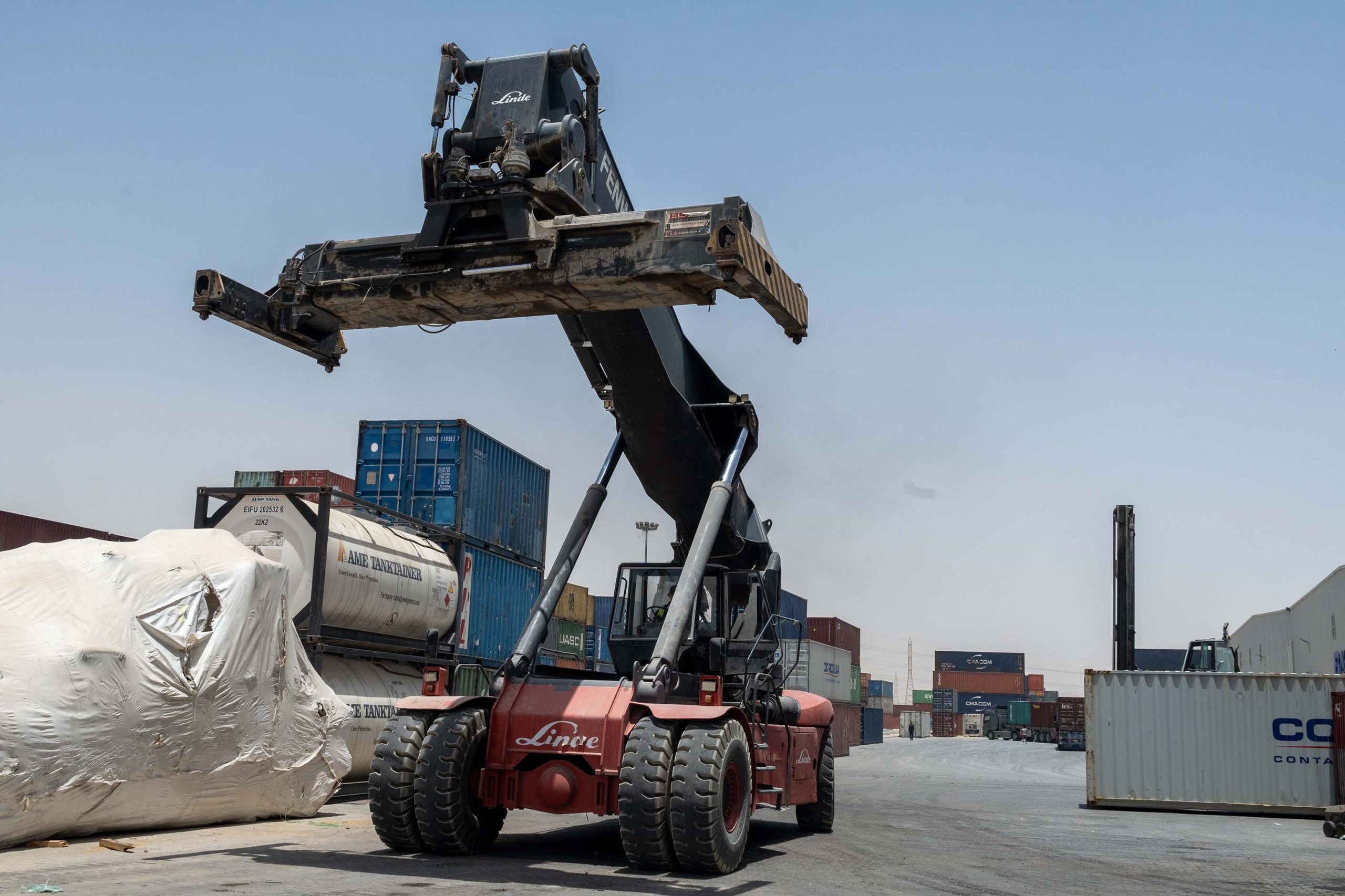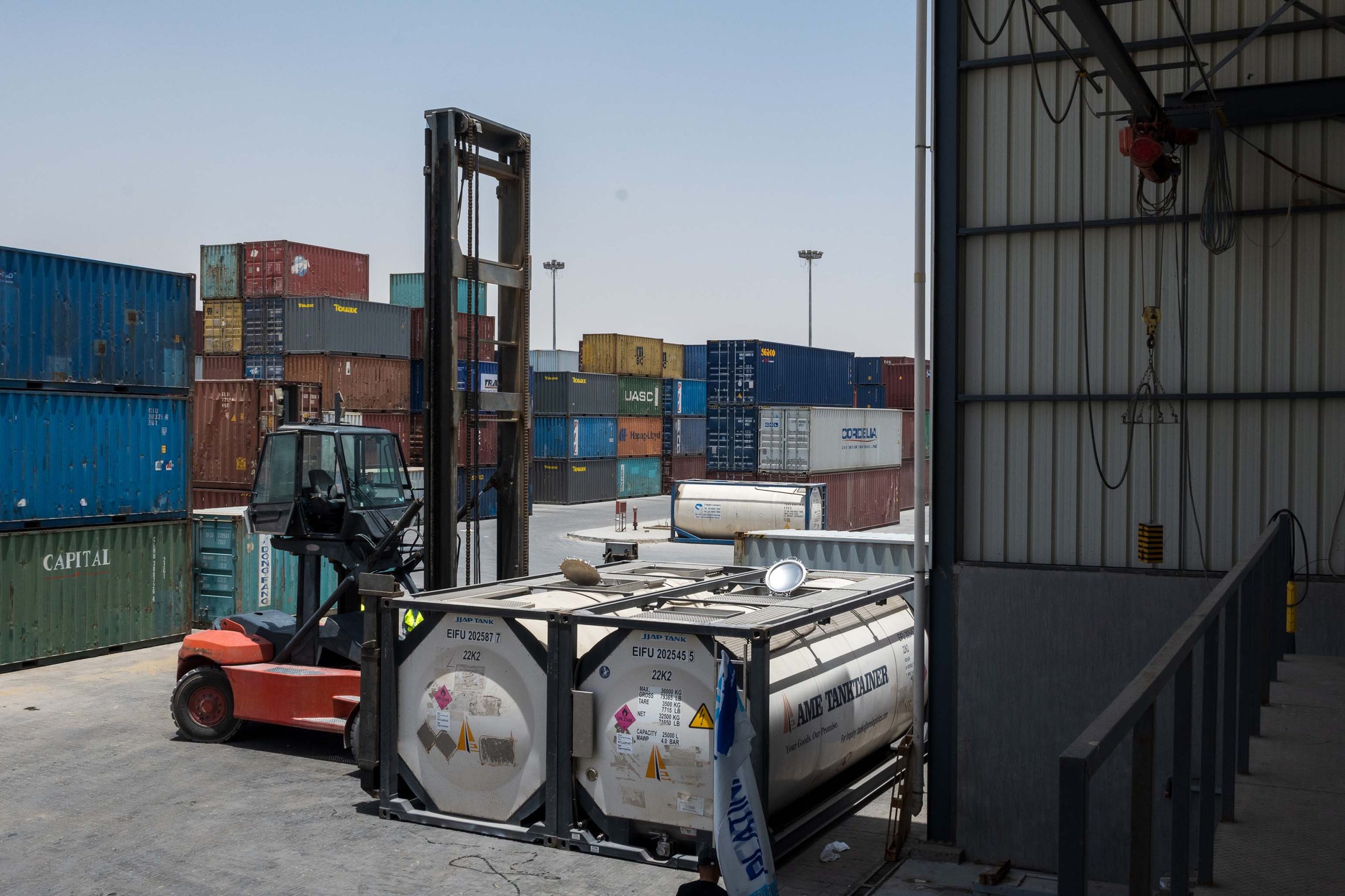Handling in & out
Handling and moving an ISO tank requires careful planning, proper equipment, and adherence to safety protocols to ensure the safety of personnel and the integrity of the tank and its contents. Here’s a high-standard process for handling and moving an ISO tank:
- Preparation:
• Conduct a thorough inspection of the ISO tank to ensure it is in good condition and suitable for transport.
• Verify that the tank is properly labeled with the correct cargo information and markings.
• Ensure that all valves, fittings, and accessories are securely attached and in working order.
• Check that the tank is properly secured to its chassis or frame and that any securing devices, such as twist locks or straps, are in place and functioning correctly. - Safety Briefing:
• Provide a safety briefing to all personnel involved in the handling and moving of the ISO tank.
• Emphasize the importance of following established procedures, using proper lifting techniques, and wearing appropriate personal protective equipment (PPE). - Equipment Inspection:
• Inspect all equipment used for handling and moving the ISO tank, including forklifts, cranes, slings, and lifting devices.
• Ensure that equipment is properly maintained, certified, and capable of safely handling the weight and dimensions of the tank. - Lifting and Loading:
• Use appropriate lifting equipment to hoist the ISO tank onto a suitable transport vehicle, such as a flatbed trailer or chassis.
• Ensure that lifting points on the tank are designed and rated for lifting loads and that lifting devices are positioned securely to prevent shifting or imbalance. - Securing and Bracing:
• Secure the ISO tank to the transport vehicle using approved methods and equipment, such as twist locks, chains, straps, or ratchet binders.
• Use blocking and bracing materials to prevent movement and shifting of the tank during transport.
• Ensure that the tank is positioned and secured in accordance with applicable regulations and industry standards. - Transportation:
• Transport the ISO tank to its destination using a designated route approved for the type of cargo being transported.
• Follow all applicable regulations and safety guidelines for the transportation of hazardous materials.
• Monitor the tank during transport for any signs of leakage, damage, or shifting. - Unloading:
• Use appropriate equipment and procedures to unload the ISO tank safely from the transport vehicle.
• Follow established protocols for positioning and securing the tank during unloading to prevent accidents or spills.
• Inspect the tank for any damage or issues that may have occurred during transport. - Storage or Installation:
• Place the ISO tank in its designated storage location or installation site using approved methods and equipment.
• Ensure that the tank is properly supported and stabilized to prevent tipping or movement.
• Verify that all connections, valves, and fittings are properly installed and secured. - Documentation and Record-Keeping:
• Maintain accurate records of all handling and transportation activities, including inspections, loading and unloading procedures, and any incidents or deviations from standard protocols.
• Document the condition of the tank before and after transport, noting any damage or issues that may have occurred. - Post-Transport Inspection:
• Conduct a final inspection of the ISO tank to ensure it has arrived at its destination safely and is ready for use.
• Address any maintenance or repair needs identified during the inspection before putting the tank into service.
2.5 YEAR AIR (PNEUMATIC) TESTING and 5 YEAR HYDROSTATIC TESTING
Performing air (pneumatic) testing and hydrostatic testing on ISO tanks are critical procedures to ensure their structural integrity and compliance with safety regulations. Here’s a high standard process for conducting these tests:
2.5-Year Air (Pneumatic) Testing:
- Preparation:
• Ensure the ISO tank is empty, cleaned, and free from any residues or contaminants.
• Verify that all valves, fittings, and closures are securely tightened and in good condition.
• Confirm that the tank is properly ventilated and depressurized. - Pressure Testing Equipment:
• Use calibrated pressure gauges and other appropriate testing equipment capable of accurately measuring air pressure.
• Ensure all equipment is properly maintained and certified for use. - Test Procedure:
• Connect the pressure testing equipment to the tank’s pressure relief valve or other suitable connection point.
• Gradually increase the air pressure inside the tank to the specified test pressure, typically 1.5 times the maximum allowable working pressure (MAWP).
• Monitor the pressure gauge readings carefully, ensuring they remain within the acceptable range and there are no sudden fluctuations or drops.
• Maintain the test pressure for the required duration, typically at least 30 minutes, while inspecting the tank for any signs of leaks, bulging, or other abnormalities. - Leak Detection:
• Conduct a thorough visual inspection of all weld seams, fittings, and other potential leak points.
• Use leak detection solutions or electronic leak detection devices to identify any leaks that may be present.
• Address any leaks immediately and retest as necessary to ensure the tank meets the required standards. - Documentation and Certification:
• Document the results of the air testing procedure, including the test pressure, duration, any observations or findings, and any corrective actions taken.
• Certify that the tank has passed the air test and is safe for continued use.
• Maintain records of the test results and certification for regulatory compliance and future reference.
5-Year Hydrostatic Testing: - Preparation:
• Empty the ISO tank of all contents and thoroughly clean it to remove any residues or contaminants.
• Ensure the tank is properly ventilated and depressurized.
• Remove or secure any accessories or fittings that may interfere with the testing process. - Pressure Testing Equipment:
• Use calibrated pressure gauges, water pumps, and other equipment specifically designed for hydrostatic testing.
• Ensure all equipment is properly maintained and certified for use. - Test Procedure:
• Fill the ISO tank with water, ensuring it is completely filled and there are no air pockets or trapped air.
• Close and secure all openings, including valves, vents, and manholes.
• Gradually increase the water pressure inside the tank to the specified test pressure, typically 1.5 times the MAWP.
• Monitor the pressure gauge readings and inspect the tank for any signs of leakage, distortion, or other abnormalities.
• Maintain the test pressure for the required duration, typically at least 30 minutes, while monitoring for leaks or other issues. - Leak Detection:
• Conduct a thorough visual inspection of the tank, focusing on weld seams, fittings, and other potential leak points.
• Use leak detection solutions or electronic leak detection devices to identify any leaks that may be present.
• Address any leaks immediately and retest as necessary to ensure the tank meets the required standards. - Draining and Drying:
• Drain the water from the tank completely after the hydrostatic test is complete.
• Thoroughly dry the interior of the tank to prevent corrosion or other damage. - Documentation and Certification:
• Document the results of the hydrostatic testing procedure, including the test pressure, duration, any observations or findings, and any corrective actions taken.
• Certify that the tank has passed the hydrostatic test and is safe for continued use.
• Maintain records of the test results and certification for regulatory compliance and future reference.



